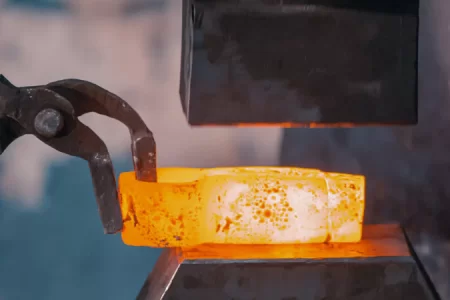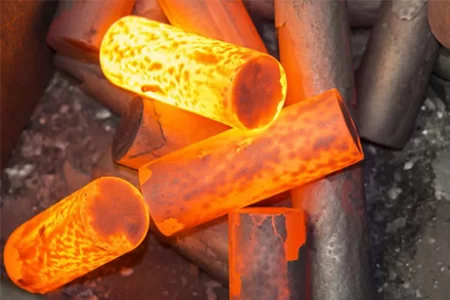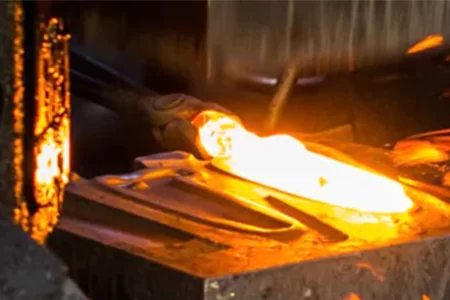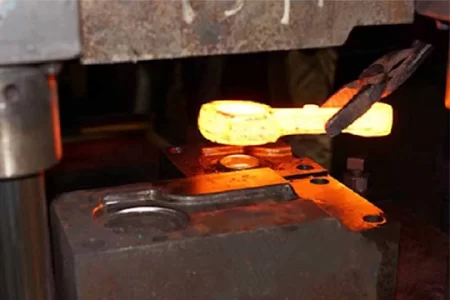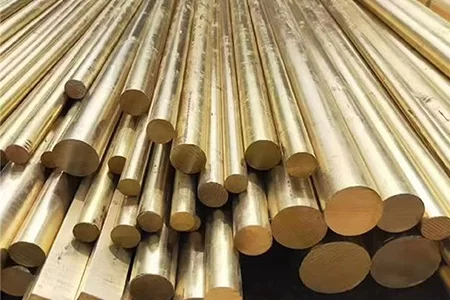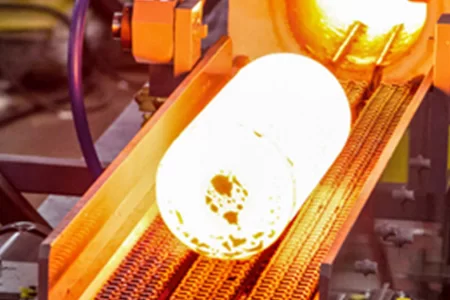By sharing knowledge, experience and views in the field of forging technology, we help you understand, learn and apply relevant technologies.

Hulk Metal Forging Technology
Share technical experience
-
Home>
-
Blog>
-
Technology>
Hot Forging and CNC Machining: An Inseparable Combination in Modern Manufacturing

Introduction to hot forging and CNC machining
Basic Definitions of Hot Forging and CNC Machining
Hot forging and CNC machining are two essential processes in modern manufacturing that enable the production of high-quality, durable, and precise components. Hot forging involves heating metal above its recrystallization point and shaping it under high pressure, while CNC (Computer Numerical Control) machining uses computer-controlled machines to precisely cut, mill, drill, and shape materials.
The Importance of Hot Forging and CNC Machining in Modern Manufacturing
In the contemporary manufacturing landscape, both hot forging and CNC machining play indispensable roles in ensuring high-performance components. Hot forging is particularly valuable for producing strong, durable, and complex components. CNC machining, on the other hand, is crucial for achieving high precision and intricate geometries that meet the most demanding specifications.
Why Hot Forging and CNC Machining Are Inseparable: The Need for Integration
These two processes complement each other in many ways. Hot forging enhances the material properties and structural integrity of components, while CNC machining refines them to meet exacting standards for size, shape, and surface finish. The combination of both techniques ensures that the final product meets both strength and precision requirements, which would be difficult to achieve with either process alone.
Hot Forging: Concepts and Advantages
The Hot Forging Process (From Heating to Shaping)
Hot forging involves several key steps:
Heating the Metal: The material, typically a metal like steel or aluminum, is heated to a temperature above its recrystallization point, making it malleable.
Shaping the Material: Once heated, the metal is placed into a mold or die, where it is subjected to high pressure. This process can be done using a hammer, press, or die-forging machine.
Cooling and Finishing: After forging, the part is cooled, and any imperfections are addressed through secondary processes like surface treatment or machining.
Main Advantages of Hot Forging
Improved Internal Structure: The hot forging process aligns the grain structure of the material, resulting in enhanced mechanical properties like increased strength, toughness, and resistance to fatigue.
Enhanced Product Strength and Toughness: Hot forging produces parts with superior mechanical properties compared to casting or other methods. The process results in a denser material with fewer defects.
Complex Part Production: Hot forging allows for the creation of complex and intricate shapes that would be difficult or impossible to achieve through casting or machining alone.
Comparison with Other Manufacturing Methods (e.g., Casting)
When compared to casting, hot forging offers significant advantages in terms of material integrity. Cast parts can often have internal defects, such as porosity, which reduce their strength and durability. In contrast, hot-forged components are generally free of such defects and have a more consistent grain structure, providing higher performance under stress.
CNC Machining: Concepts and Advantages
The CNC Machining Process (From Computer Control to Precision Cutting)
CNC machining is a precision manufacturing process that uses computer software to control the movements of machine tools. These tools, such as lathes, mills, and drills, remove material from the workpiece to create a desired shape.
Design and Programming: The part design is created using Computer-Aided Design (CAD) software, and the CNC machine is programmed using Computer-Aided Manufacturing (CAM) software to follow the design specifications.
Material Removal: The CNC machine removes material from the workpiece using rotating tools, achieving high-precision cuts and shapes.
Finishing: After the rough cutting, the part undergoes finishing operations, such as polishing or grinding, to meet tight tolerance and surface finish requirements.
Main Advantages of CNC Machining
High Precision and Repeatability: CNC machines are capable of achieving extremely tight tolerances, making them ideal for parts that require exact dimensions.
Flexibility and Automation: CNC machining allows for the production of a wide range of components without the need for manual intervention. Once the program is set, the machine can operate continuously with minimal human oversight.
Efficient Complex Geometry Production: CNC machines can produce highly complex shapes that would be difficult or time-consuming with manual methods, making them ideal for applications that require intricate geometries.
Comparison with Traditional Machining Methods
CNC machining offers several advantages over traditional machining methods. Unlike manual methods, CNC machining provides consistent quality, minimizes human error, and can produce parts with greater complexity and precision. Additionally, CNC machines can operate for extended periods without operator involvement, increasing production efficiency.
The Integration of Hot Forging and CNC Machining
Pre-Forging Preparation: Optimizing Hot Forging Dies and Parts through CNC Machining
Before the hot forging process begins, it is essential to prepare the dies and molds that will shape the material. These dies must be designed with high precision to withstand the extreme temperatures and pressures involved in the forging process. CNC machining is used to create these dies with precise dimensions, ensuring that the forging process will produce the desired shape and mechanical properties.
Post-Forging Machining: Achieving Higher Precision and Surface Finishing with CNC
Once the hot forging process is complete, the part may still require further refinement. While hot forging creates the initial shape and strength of the component, CNC machining is employed to refine the part to meet tight tolerances and achieve the necessary surface finish. This secondary process ensures that the final product meets the exact specifications for dimension, surface smoothness, and geometry.
Real-World Example: Precast Concrete Accessories
A practical example of the integration of hot forging and CNC machining can be found in the production of precast concrete accessories. These components, which are essential for the construction industry, require high-strength properties to withstand heavy loads and harsh conditions. The initial shaping of the components is done using hot forging, while CNC machining ensures that the final parts meet strict dimensional tolerances and surface finish requirements. The combination of both processes results in a reliable, high-performance product.
Technical Challenges and Solutions in Integrating Hot Forging and CNC Machining
One of the challenges in integrating these two processes is ensuring that the hot-forged parts are suitable for machining without compromising their structural integrity. To address this challenge, it is essential to use materials that maintain their strength and shape after the forging process. Additionally, the forging process must be carefully controlled to minimize the need for extensive post-machining. Advanced materials, heat treatments, and machining strategies can help overcome these challenges, ensuring that the parts retain their strength while achieving the required precision.
Why is Hulk Metal worth your choice?
At HULK Metal, we take pride in offering state-of-the-art hot forging and CNC machining solutions that provide unmatched precision, strength, and durability for our clients' manufacturing needs. Here’s why HULK Metal stands out:
Superior Material Integrity: Our hot forging process ensures the internal structure of the metal is optimized for maximum strength, toughness, and fatigue resistance.
High Precision CNC Machining: Post-forging, our CNC machining process refines each component with extreme precision, ensuring tight tolerances and smooth surface finishes.
Versatile Production: From simple to complex geometries, we can meet the demands of various industries such as trailer accessories mining parts, and construction, offering tailored solutions for each project.
Enhanced Efficiency: The combination of hot forging and CNC machining allows for rapid production of high-quality parts, reducing lead times and increasing overall manufacturing efficiency.
Customized Solutions: At HULK Metal, we work closely with our clients to provide custom designs, ensuring that each part is crafted to meet specific performance and dimensional requirements.
Hot forging and CNC machining are two powerful manufacturing techniques that, when combined, offer a robust solution for producing high-strength, high-precision components. The integration of these processes addresses the unique advantages and limitations of each, allowing manufacturers to achieve parts that meet the most demanding performance standards. By leveraging both hot forging and CNC machining, industries such as automotive, aerospace, and construction can produce reliable, durable, and precisely engineered components that stand the test of time.
The continued advancement of both technologies, along with the growing trend of automation and smart manufacturing, will likely lead to even more efficient and cost-effective solutions in the future. As industries demand higher performance, the inseparable combination of hot forging and CNC machining will continue to be a cornerstone of modern manufacturing.
Article Navigation
Article Navigation
Industries
Foundries
-

July.01, 2024
Difference between hot forging and cold forging
READ MORE
-

June.27, 2024
What are the advantages and disadvantages of the hot forging process?
READ MORE
-

January.18, 2024
Forging: What Is It? What Are The Different Types of Hot Forging?
READ MORE
-

November.29, 2024
What is steel forging?
READ MORE
-

July.30, 2024
What are the materials for hot forging?
READ MORE
-

July.03, 2024
What are the processes of hot forging?
READ MORE



